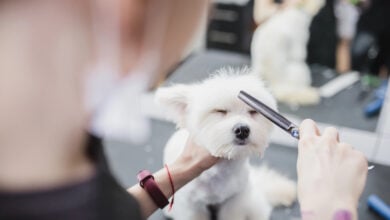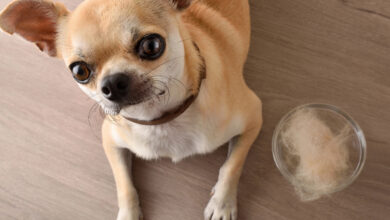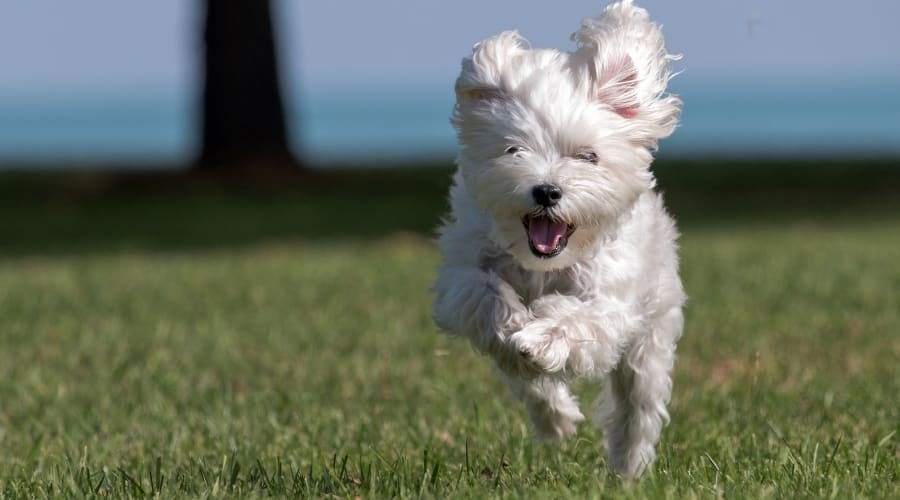Unmasking the Myth: Do Goldendoodles Really Shed?
When you purchase through links on our site, we may earn a commission. Here’s how it works.
You’ve seen the fluffy Instagram reels. The teddy bear faces. The promises of “hypoallergenic” magic.
Table of Contents
But here’s the truth: Goldendoodles shed. Not a ton. It’s not like a Golden Retriever explosion on your couch. But they do shed.
And if you’re picturing a spotless house and a tumbleweed-free life, it’s time for a quick reality check.
The good news? With the right coat type, a decent brush, and a little consistency, you can manage the fluff without losing your mind. This guide breaks it all down. How much they shed. When it happens. And what you can actually do about it.
Let’s dig in because that fur’s not going to clean itself.
| Brush For Shedding | Comb For Matting | Gloves For Baths |
|---|---|---|
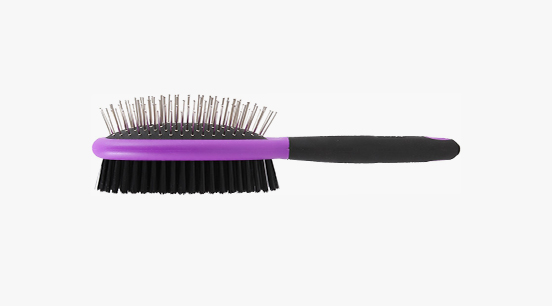 | 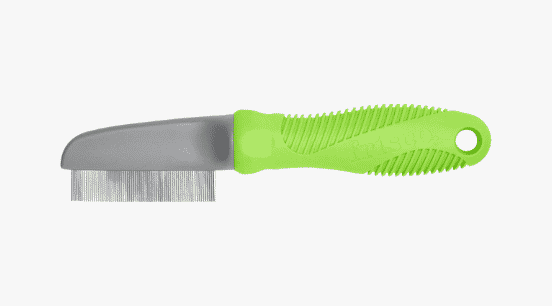 | 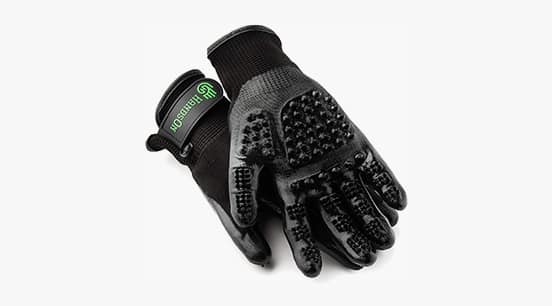 |
| Hartz Double-Sided | Frisco Single-Row | HandsOn Gloves |
| View On Amazon | View On Chewy | View On Chewy |
Do Goldendoodles Really Shed?
Short answer? Yes, they do. But not the way you might think.
Goldendoodles are a mix between the Golden Retriever and the Poodle and can be either standard or miniature-sized. Their size doesn’t impact the shedding frequency, but rather which parent breed they tend to inherit their coat from.
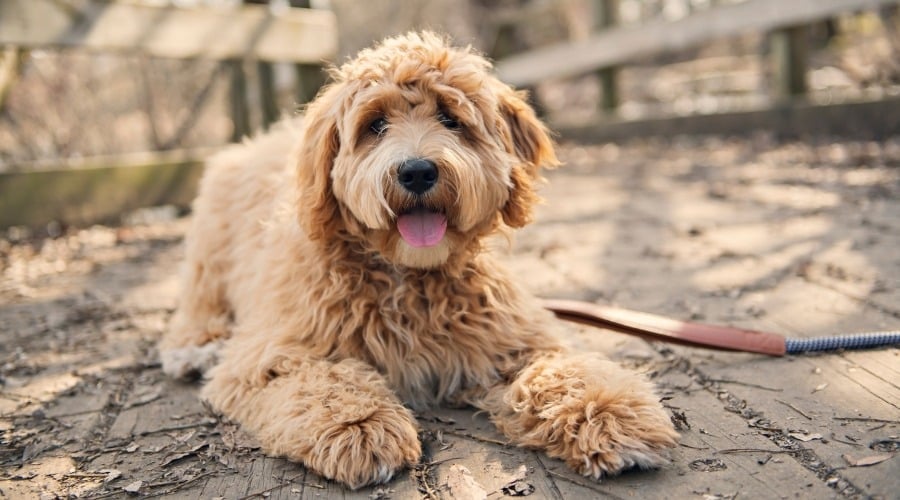
The Goldendoodle is the most common Golden Retriever mix and also sheds the least frequently compared to others. This is because the fur they discard gets trapped in the rest of their fur and doesn’t stick to your clothes or furniture.
Unpacking the Myth of the Hypoallergenic Doodle
Goldendoodles have built a reputation as the go-to “hypoallergenic” dog breed. It sounds great on paper, has low dander, has no shedding, and is perfect for allergy sufferers. But here’s the reality: no dog is 100% hypoallergenic. Not even a Poodle. And definitely not a mix of Poodle and Golden Retriever.
What Goldendoodles do offer is a more manageable kind of shedding. Thanks to their Poodle parent, many of them have curly or wavy coats that hold onto loose hairs instead of dropping them all over your floor. That’s why some owners barely notice shedding at all, especially if they stay on top of grooming.
But not every Goldendoodle inherits that tight, curly coat. Some end up with a straighter, shaggier coat, more like their Golden Retriever parent. These pups are more likely to shed visibly and regularly.
What really determines shedding levels isn’t hype. It’s genetics, coat type, and routine care. If you’re lucky, your Doodle will inherit a low-shedding coat. If not, it just means you’ll be brushing a little more often and investing in a solid vacuum.
So yes, Goldendoodles do shed. Just not as much as the average dog. And definitely not enough to cancel out all that charm.
Goldendoodle Coat Types Explained…Which One Will Your Doodle Inherit?
Goldendoodle coats come in a few different styles, and each one has a different impact on shedding and grooming needs. While genetics play the biggest role, there are some clues you can spot early on.
Here’s a breakdown of the three main coat types:
- Curly Coat (Poodle-like): Tight curls, low shedding, and the most “hypoallergenic” option. Great for allergy-sensitive households, but it does require regular brushing to prevent mats.
- Wavy Coat (Fleece): The most common coat type. It’s soft and shaggy and sits somewhere between the Golden Retriever and the Poodle. Expect minimal shedding with moderate grooming needs.
- Straight Coat (Golden Retriever-like): The least common coat in Goldendoodles. These pups shed more like a typical Golden Retriever and have a looser, straighter texture. It’s easier to brush, but there is more fur on your floors.
When Will You Know for Sure?
Most Goldendoodles’ adult coats start to come in after their first year. Until then, it’s a bit of a guessing game. But here’s a tip:
Pups with a bearded face and a shaggy underbelly often grow into wavier, more Golden-like coats.
No matter which coat type your Doodle ends up with; regular grooming is key to keeping them comfortable and keeping your house clean.
When and Why Goldendoodles Shed the Most
Seasonal changes, hormones, and hidden shedding triggers all contribute to when Goldendoodles shed the most.
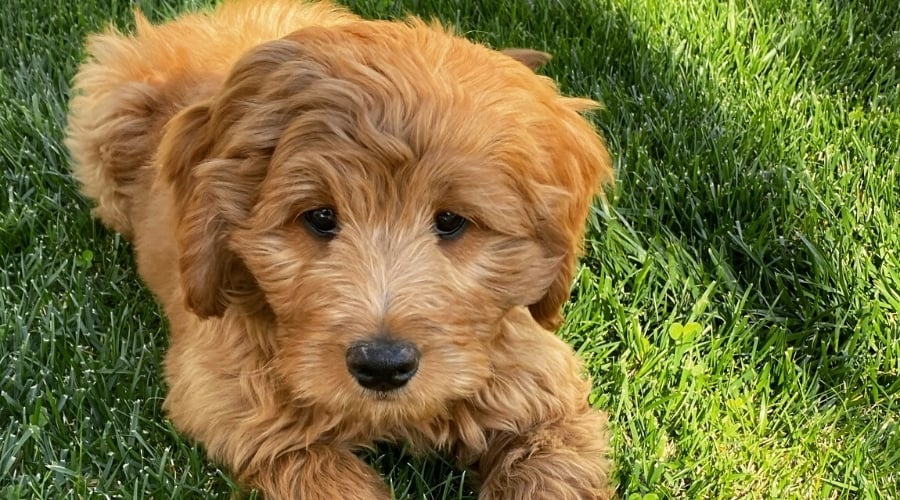
Goldendoodles don’t shed like a Golden Retriever, but they’re not shed-proof either.
Most have coats that trap loose hair rather than dropping it on your couch. That’s a win. But if you’re picturing a home completely free of dog hair, it’s time for a reset. Here’s what to expect.
Goldendoodle Shedding Frequency: What’s Normal?
Goldendoodles are considered low-shedding, not no-shedding. Their shedding tends to be:
- Year-round, but in small amounts
- Seasonally increased during major coat changes
- Mild enough to manage with consistent brushing and grooming
For most Doodles, a few weekly brushing sessions are enough to keep loose hair under control.
When Do Goldendoodles Shed the Most?
Like other double-coated breeds, Goldendoodles tend to shed more in:
- Late Spring/Early Summer – Shedding their winter undercoat
- Late Fall/Early Winter – Making room for a thicker winter coat
Even during these times, Goldendoodles usually shed less than other double-coated dogs like Huskies or Border Collies. But if you’re noticing more hair around the house twice a year, you’re not imagining it, it’s part of the cycle.
Miniature Goldendoodles will typically shed less when it comes to the sheer volume of hair, but that’s due to their smaller stature.
What Can Trigger Excess Shedding?
Beyond the seasons, other factors can make your Doodle shed more than usual. Some are harmless. Others may need a vet’s attention.
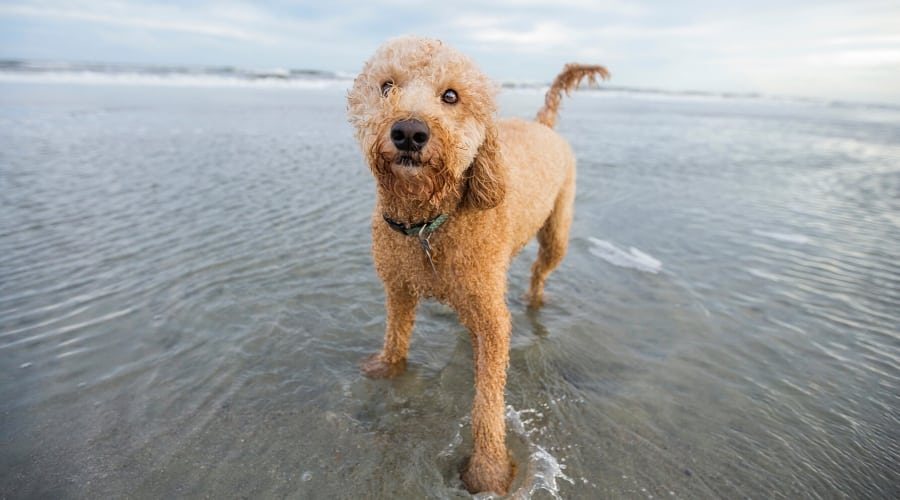
Common shedding triggers include:
- Stress: New environments, changes in routine, or anxiety
- Allergies: Skin reactions to food, pollen, or grooming products
- Poor Nutrition: Diets lacking in essential fatty acids (like Omega-3s)
- Overbathing: Stripping the coat of natural oils
- Underlying Health Issues: Parasites, skin infections, or hormonal imbalances
- Wrong Shampoo: Harsh or heavily scented formulas can irritate the skin
Staying on top of these triggers can make a big difference in keeping your Doodle’s coat healthy and your furniture free from excess fur.
When Shedding Isn’t Normal
A little shedding is expected, even with a Goldendoodle. But if it suddenly increases for no clear reason, or your dog’s coat looks dull, patchy, or unusually thin, it may be more than a grooming issue.
Pay attention to signs like:
- Bald spots or uneven hair loss
- Skin that looks irritated, flaky, or inflamed
- A sudden change in how their coat feels—greasy, dry, or brittle
These can point to a deeper health issue, like a hormonal issue or undiagnosed skin condition. Trust your gut and check in with your vet if something feels off. Catching problems early can make a big difference in treatment and your dog’s comfort.
How Goldendoodle Shedding Varies by Generation (F1, F1B, F2 & More)
Not all Goldendoodles are created equal when it comes to shedding. The generation of your Doodle, meaning how many times Poodle and Golden Retriever genes have been mixed, plays a big role in coat type and shedding levels.
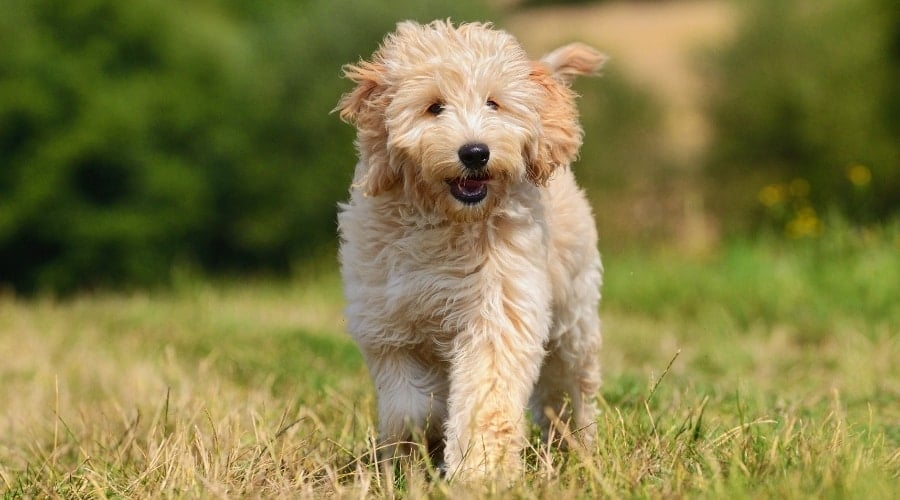
Here’s how it breaks down:
F1 (First Generation):
- 50% Poodle, 50% Golden Retriever
- Shedding level: Moderate
- The coat type is unpredictable and can be straight, wavy, or curly. It’s a bit of a genetic toss-up. These dogs may shed more than others, especially if they inherit more Golden traits.
F1B (Backcrossed):
- 75% Poodle, 25% Golden Retriever
- Shedding level: Low
- Usually the best bet for allergy sufferers. The higher percentage of Poodle genetics often results in a curlier, lower-shedding coat.
F2 (Second Generation):
- F1 Goldendoodle × F1 Goldendoodle
- Shedding level: Varies widely
- Genetics get more mixed here. You might get a very curly, non-shedding coat—or one that sheds just like a Golden. It’s less predictable than F1B.
F2B, Multigen, and Beyond:
- These dogs typically have a higher concentration of Poodle genes.
- Shedding level: Low (usually)
- Multigen Doodles are often bred specifically for consistent coats and minimal shedding. Still, it depends on the breeder and their focus on coat genetics.
Bottom Line: If shedding is a top concern, look for an F1B or multigen Goldendoodle with a proven curly coat. But remember, genetics aren’t a guarantee for producing low-shedding pups. Always check with your breeder about the parents’ coats and any genetic testing they’ve done.
Grooming Routines to Minimize Shedding: Tailored Tips by Coat Type
Regular grooming makes a big difference in controlling how much your Goldendoodle sheds. But not every coat type needs the same care. Here’s a breakdown of the best routine based on whether your dog has a curly, wavy, or straight coat.
Curly Coat (Tight Poodle-Like Curls): Low shedding. High maintenance.
- Brushing: Three to four times per week. Use a slicker brush to remove tangles and a metal comb to reach the undercoat. Pay extra attention to areas that mat easily, like behind the ears and under the legs.
- Bathing: Every four to six weeks. Use a moisturizing or oatmeal-based shampoo to protect the skin and prevent dryness.
- Professional Grooming: Every six to eight weeks. Regular trims help avoid painful matting and keep the coat manageable.
Wavy Coat (Fleece or Shaggy Texture): Moderate shedding. Moderate maintenance.
- Brushing: Two to three times per week. A pin brush or slicker brush works well. Focus on high-friction areas like where collars or harnesses sit.
- Bathing: Every six to eight weeks. Avoid overwashing to maintain natural coat oils.
- Professional Grooming: Every eight to ten weeks. A trim keeps the coat tidy and easier to brush between visits.
Straight Coat (Golden Retriever-Like): Higher shedding. Lower maintenance.
- Brushing: Two to three times per week and daily during peak shedding seasons. Use a de-shedding tool or undercoat rake to remove loose hair and reduce buildup.
- Bathing: Every six to eight weeks. Look for a shampoo that supports coat health and soothes the skin.
- Professional Grooming: Every ten to twelve weeks. Occasional trimming around the feet, tail, and hygiene areas is usually enough.
Tip: Always brush before bathing. Mats tighten when wet, making them harder to remove and uncomfortable for your dog.
Grooming Products That Actually Work
Managing your Goldendoodle’s shedding starts with the right tools. Whether you’re brushing or bathing, quality products can make a big difference in how much fur ends up on your floors.

Best Brushes for Goldendoodles
Brush at least two to three times a week. Daily brushing during high-shed seasons can make a noticeable difference.
Choose based on your dog’s coat type and grooming needs.
- Slicker Brush: Great for curly and wavy coats. Helps remove tangles and loose hair without irritating the skin.
- Pin Brush: Ideal for wavy or straight coats. Gentle on the coat and easy to use for regular upkeep.
- Deshedding Tool: Useful during seasonal shedding. Reaches the undercoat to lift loose hairs that regular brushes miss.
Best Shampoos for Goldendoodles
Mild, skin-friendly dog shampoo formulas are best for shedding control and coat health.
- Oatmeal Shampoo: Soothes dry, itchy skin and supports a healthy coat. Perfect for regular use on most Goldendoodles.
- Hypoallergenic or Sensitive Skin Shampoos: Best for dogs with allergies or skin flare-ups. Look for fragrance-free, vet-recommended formulas.
- Medicated Shampoos: Use only under vet guidance. Helpful for addressing underlying skin issues that can cause excess shedding.
Deshedding Products
We recommend investing in a quality deshedder, unless you have a hairless pup. While you may not need an aggressive deshedding tool like The Furminator, it likely will still make sense to keep one on hand for the few times per year you’ll likely encounter a little more hair.
Deshedders typically run the same cost as a brush, but you should always have one of each since their outcomes are completely different.
Deshedders take hair removal to the next level. They are perfect for digging out additional hair under your Goldendoodle’s top layer of fur. It’s worth noting that deshedding brushes can be a little more abrasive to your dog’s skin. Because of that, we don’t recommend overuse.
Diet and Nutrition: Fueling a Healthier Coat from the Inside Out
What your Goldendoodle eats shows up in their coat. A dull, dry, or overly shedding coat often points to what’s happening in the bowl.

High-Quality Kibble Matters
Skip the bargain bin if you can. Premium dry food is packed with nutrients your dog actually needs, especially Omega-3 and Omega-6 fatty acids, which are essential for coat health and skin hydration.
Feed your Goldendoodle two to three times a day, and make sure the kibble lists real meat as the first ingredient. Look for foods that include:
- Salmon, chicken, or lamb (as a primary protein)
- Fish oil or flaxseed (for Omegas)
- Vitamin E, biotin, and zinc (for skin and coat support)
Add Whole Foods for a Boost
Toss in dog-safe fruits and vegetables a few times a week. Blueberries, carrots, and spinach are loaded with antioxidants and help support the immune system—another key factor in reducing skin irritation and excess shedding.
A balanced diet won’t eliminate shedding, but it can absolutely reduce it and improve coat texture.
Supplements Targeted Support for Skin and Coat Health
Even with a solid diet, some dogs need a little extra help. That’s where supplements come in.
Fish Oil
Rich in Omega-3s, fish oil can dramatically improve coat shine, reduce dry skin, and help minimize shedding. You can find it in:
- Liquid pumps to mix with food
- Soft chews (easy to use as treats)
- Capsules (for dogs that don’t mind pills)
Multifunctional Skin & Coat Supplements
These go beyond Omegas and often include biotin, zinc, and other skin-supporting nutrients. They’re great for dogs with sensitive skin or seasonal shedding issues.
Look for formulas labeled as:
- Skin and Coat Support
- Omega 3-6-9 Blends
- Allergy or Itch Relief (with vet approval)
Pro Tip: Chewable supplements can double as training treats, especially helpful for picky eaters.
3 Tools to Keep Your Home Clean: Smart Solutions to Stay Ahead of the Fur
Even with consistent grooming, a few stray hairs will still make it into your home. Goldendoodles may be low shedders, but they’re not “no shedders,” and dog hair has a way of showing up in places you’d never expect.

The right cleaning tools can make a big difference. Here’s what we recommend for a cleaner, fur-free home.
1. Robot Vacuum: Ideal for hands-free daily cleanup.
A good robot vacuum can quietly patrol your floors while you’re at work, asleep, or out with your pup. Many models allow you to set cleaning schedules, target specific rooms, and even avoid pet bowls or toys. They’re especially useful for hardwood, tile, or low-pile carpets where dog hair tends to collect.
If you want to stay ahead of shedding without constant effort, this is one of the easiest tools to invest in.
2. Cordless Vacuum: Flexible and fast for spot cleaning.
A cordless vacuum is your best friend for quick cleanups, stairs, furniture, and tight corners. No cords to trip over, no dragging a bulky canister through the house. Choose a model with attachments designed for pet hair, and you can tackle upholstery, rugs, and pet beds with minimal effort.
Keep it easily accessible so it’s simple to grab when you notice those inevitable tufts of fur.
3. Air Purifier: Clean air, less pet odor, and fewer allergens.
Pet hair isn’t the only thing that sheds. Dander, odors, and airborne allergens can linger long after grooming. An air purifier with a HEPA filter can help capture those particles and improve indoor air quality, especially in smaller rooms like bedrooms or offices.
If you or anyone in your home has mild pet allergies, this is a quiet but powerful upgrade that makes a noticeable difference.
Frequently Asked Questions
Shedding can be unpredictable, especially with a mixed breed like the Goldendoodle. Here are answers to a couple of questions we hear all the time. If we missed yours, let us know in the comments.
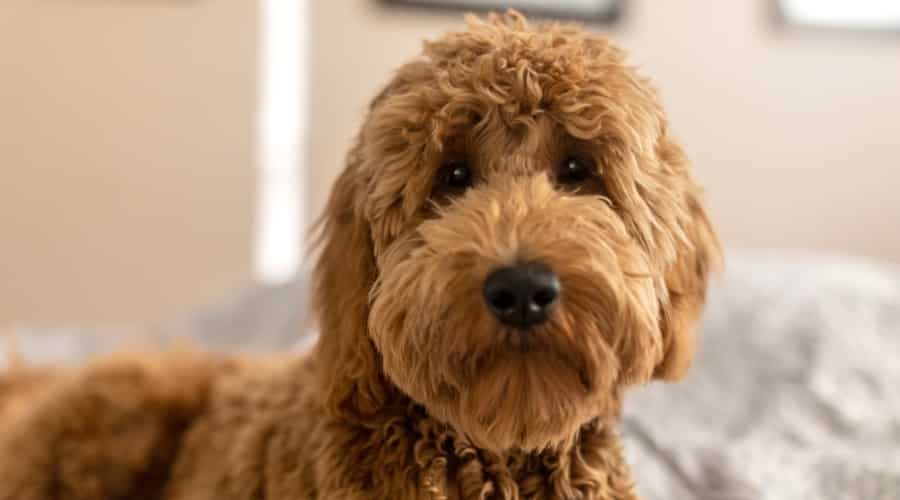
Why does my Goldendoodle shed so much?
As mentioned, despite popular belief – Goldendoodles are not hypoallergenic dogs. They do shed, and how much will depend on their parents, their coat type, and other factors.
Do Goldendoodles shed more in summer?
Yes, many do. As the weather warms up, Goldendoodles often shed their winter undercoat to stay cooler. This is part of a normal seasonal cycle, especially in dogs with a thicker or double coat. The good news is that with regular brushing during these months, you can keep the extra fur under control and out of your living room.
When do Goldendoodles shed their puppy coat?
Typically once your puppy hits a year of age, you can expect to see their adult coat start to replace their puppy coat.
Can I tell my puppy’s coat type early?
You can get some clues, but it’s not a sure thing. Look at the texture of your puppy’s face and underbelly. Puppies with a fluffy face or “beard” and a shaggier underside are more likely to grow into a wavy or straight coat. That said, a Goldendoodle’s adult coat usually doesn’t settle in until 10 to 12 months, so there’s always a bit of guesswork involved.
Do Golden Retrievers shed more than Goldendoodles?
Typically yes. The mixing of the Poodle with the Golden Retriever is what helps to reduce shedding. Poodles are naturally low-shedding dogs, as are most standard Poodle mixes.
Why doesn’t my Goldendoodle look like a teddy bear?
Lots of people buy Goldendoodle puppies with the thought they will look like a teddy bear. While this is the case with many dogs, it’s not the case with all of them. Goldendoodles that take more after their Golden Retriever parent will be less likely to have that adorable teddy bear look.
Beyond the Goldendoodle: Meet the Doodle Family
Goldendoodles may get most of the spotlight, but they’re not the only lovable, low-shedding Doodle mix out there. Breeds like Labradoodles, Aussiedoodles, Sheepadoodles, and Bernedoodles all share that same winning Poodle DNA, bringing smarts, charm, and a variety of coat types into the mix. Each one has its own personality and grooming needs, but they all thrive with the same combination of care, structure, and love.
Whether you’re already a Goldendoodle parent or just Doodle-curious, learning about these other mixes can help you find the right fit for your lifestyle or at least understand your Doodle a little better. Either way, one thing’s certain: once you fall for a Doodle, it’s hard to stop at just one.
